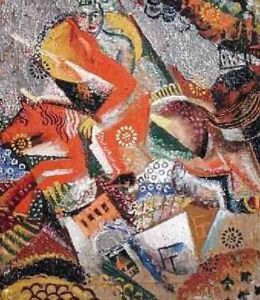Victor Nikandrovich Palmov Paintings
Victor Nikandrovich Palmov was a Russian avant-garde artist, born on May 13, 1888, in the city of Khvalynsk, which was then part of the Russian Empire. His early life was spent in an environment that was witnessing the rapid transformation of Russian society and culture, with the arts undergoing a particularly vibrant period of innovation and experimentation. Palmov was a contemporary of many significant Russian artists and was involved in the creative upheavals that characterized the early 20th century.
Palmov studied at the Moscow School of Painting, Sculpture and Architecture, where he was influenced by a variety of artistic movements and techniques. His style evolved over the years, reflecting the dynamic changes in avant-garde art, including influences from Neo-Primitivism to Cubo-Futurism. He was particularly known for his association with the 'Jack of Diamonds' (Bubnovy Valet) group, which was one of the leading art collectives of the Russian avant-garde and included artists like Ilya Mashkov, Pyotr Konchalovsky, and Aristarkh Lentulov. This group was instrumental in introducing Russian artists to the latest European artistic trends, while also seeking to incorporate elements of Russian folk art into their work.
During his career, Palmov was active not only as a painter but also as a graphic artist, theater designer, and illustrator, which demonstrated his versatile engagement with the arts. His work often featured bold colors, dynamic compositions, and a sense of movement, reflecting the energy and optimism of the pre-revolutionary avant-garde movement. Palmov's contribution to Russian art was significant in that he helped to bridge the gap between traditional Russian imagery and the burgeoning modernist aesthetic.
Unfortunately, Victor Palmov's life and career were cut short when he died on October 14, 1929, at the age of 41. His death came at a time when the Soviet regime was beginning to impose stricter controls on artistic expression, and the avant-garde movement was facing increasing suppression. As a result, many avant-garde artists, including Palmov, were sidelined in the subsequent decades, and their contributions were only fully recognized posthumously. Today, Palmov's works are considered important in the study of Russian avant-garde art and are held in various museum collections, including the Tretyakov Gallery and the Russian Museum.
